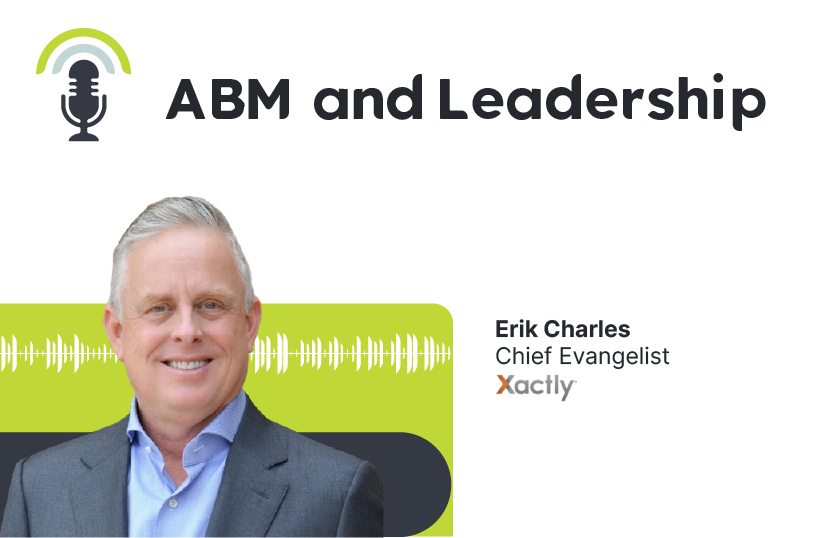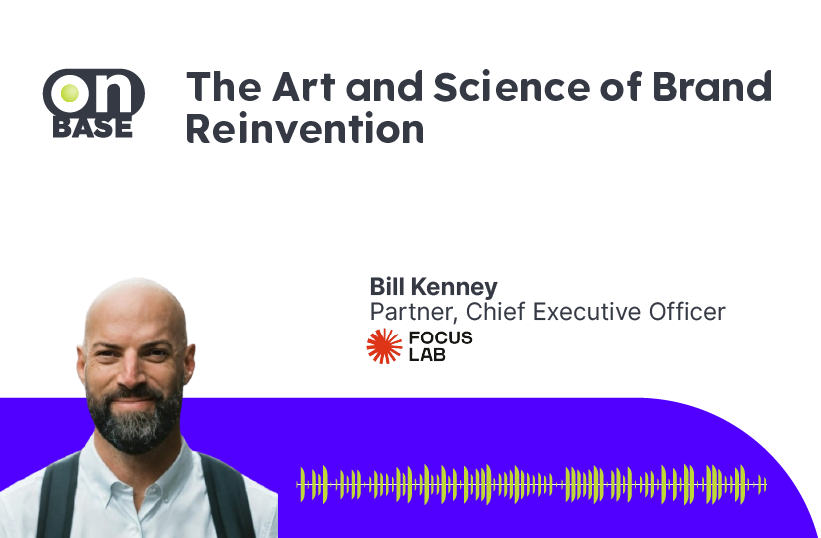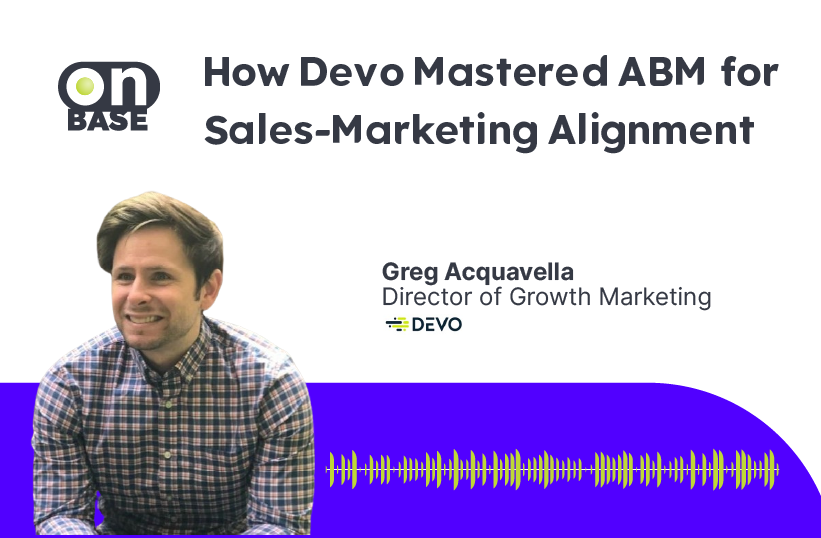Shownotes
In today’s episode, Erik Charles emphasises the importance of understanding the difference between incentives and rewards in the workplace. His extensive experience across various companies, including his current role at Xactly Corp, has given him profound insights into effective revenue and incentive management. Erik’s career journey demonstrates the value of adaptability, a keen understanding of market dynamics, and the significance of integrating sales, marketing, and engineering to drive business success. His insights are a valuable guide for professionals seeking to enhance their approach to revenue generation and employee motivation.
About the Guest
With over 30 years of experience in marketing, consulting, and solution evangelization, Erik has cultivated a deep passion for bridging the realms of sales, marketing, and engineering to propel the advancement of revenue and incentive management. As the Chief Evangelist at Xactly Corp, his role involves collaborating with partners, analysts, and academics to deliver seamlessly integrated solutions across the spectrum of revenue intelligence, sales performance management, and employee motivation.
In addition to Erik’s substantial consulting and research background, he has honed his focus on crucial metrics for sales and marketing roles, customer acquisition and retention, and the design and communication of incentive plans. Holding certifications as a Quote-to-Cash professional, Erik is recognized as a subject-matter expert in the interconnected realms of revenue intelligence, performance, and optimization.
Key Takeaways
- Understand that incentives drive behaviour changes, while rewards acknowledge contributions.
- Embrace new opportunities and challenges.
- Integrating sales, marketing, and engineering is critical to advancing revenue and incentive management.
- Balance hands-on experience with academic research and insights.
- Deep knowledge of market trends, customer needs, and competitive landscapes is vital for developing effective marketing and sales strategies.
- Stay abreast of and utilise emerging technologies, like AI, to enhance business operations and decision-making.
- Develop the ability to convey complex ideas clearly and persuasively, both in writing and verbally, as these skills are crucial in marketing and leadership roles.
Quote
“Nobody changes their behaviour at the office because they’re on a profit-sharing plan.”
– Erik Charles
Highlights from the Episode
Can you walk us through your professional journey and discuss how your background in sales and product/partner marketing helped shape your path to becoming a marketing leader?
Erik Charles’ journey began with a significant shift from a potential role at Apple to following his wife to USC, leading him to explore a career in management consulting. His initial foray into incentive plan design cultivated a deep interest in the field. Erik’s career progressed as he moved back to the Bay Area, working with Sun Microsystems and later with Calidus, where he played a crucial role in product design and marketing. He emphasises his willingness to embrace new challenges, like closing deals in Australia and building alliances, which played a significant part in his career growth. Erik also discusses his time at the University of California Irvine’s business school before moving to Xactly Corp, where he contributed in various roles, including product marketing and evangelism.
How has your background, initially in SME and then as a seller, given you a distinct advantage in marketing?
Erik Charles shares an anecdote from his time at Oxford University, emphasising the importance of communication skills, such as reading and editing your work out loud for clarity and impact. Erik also discusses his experience at Kalidus, where he learned the value of practising presentations and ensuring that marketing materials are easily deliverable by sales teams.
He highlights the importance of adapting content to various formats, from detailed white papers to concise tweets, to engage different audiences effectively. Erik stresses the significance of understanding and addressing the needs of different personas in marketing. His approach is hands-on, as seen in his time at Canon, where he accompanied sales reps to customer visits to gain real-world insights.
Could you walk us through some key moments or strategies that played a crucial role in this journey to becoming a marketing evangelist?
Erik Charles’s journey to becoming a marketing evangelist was marked by strategic career moves and an openness to embracing new challenges. He began with educational marketing and sales for Apple in Alaska, demonstrating early adaptability and skill in marketing and sales. A pivotal shift occurred when he moved to Los Angeles, where he delved into management consulting, further broadening his business acumen. At Calidus, Charles played a crucial role in aligning product design with business needs, blending technical insight with market understanding. Charles’s leadership roles in various companies, including a significant tenure at Exactly Corp, and his advisory services to startups and accelerators, refined his skills in overseeing large-scale marketing strategies.
What is your perspective on the current state of marketing, and what are your predictions on where the field is heading?
There is a significant shift towards quantifiable metrics, with marketing departments increasingly held accountable for their contributions to business growth. Marketing teams should adopt incentive programs like sales teams, focusing on tangible outcomes like pipeline generation and sales-qualified opportunities.
However, this data-driven approach might need to pay more attention to crucial aspects like brand building, outreach, and social media engagement, which are more complex to measure but still vital. An overreliance on demand generation metrics might need to pay more attention to the importance of other marketing functions.
How do you navigate the challenges of marketing attribution and its impact on pipeline/revenue, considering the evolving landscape where marketers may need more control over these outcomes?
While tracking the customer journey is essential, pinpointing the exact impact of each marketing touchpoint is difficult. Collecting data and analysing the entire customer journey, from initial interest to final sale, is necessary. However, attributing credit is complex, mainly when multiple factors like webinars, white papers, and events contribute to customer engagement.
Different business sizes are also nuanced, where smaller businesses might have a more straightforward path to sale compared to larger enterprises with multiple influencers and decision-makers. Attributing marketing success is more complex, especially with overlapping influences like partnerships and referrals.
How do you approach measuring marketing performance objectively?
To measure marketing performance objectively, Erik Charles suggests a multifaceted approach. Key metrics like pipeline generation and sales-qualified opportunities are emphasised for their quantifiability, ensuring marketing efforts directly contribute to business goals. However, he advises against an overreliance on singular metrics, advocating for a broader consideration of marketing’s impact, including brand influence and social media engagement. AI and analytics are recommended for deeper insights and pattern recognition, supporting a more nuanced understanding of marketing effectiveness. Charles also underscores the importance of acknowledging secondary effects and indirect marketing efforts, such as events and brand presence, for their role in long-term brand recognition.
What are your thoughts on incorporating incentive pay when marketers have direct control over the outcomes?
The potential benefits of aligning marketing efforts with tangible business results include pipeline generation and sales conversions. When marketers are incentivised based on clear and achievable targets, it can motivate them to be more innovative and results-driven. However, an overly simplistic approach to incentive pay should be cautioned against. There is also the risk of internal competition or misaligned goals between marketing and other departments if the incentive structure needs to be well-designed.
How do you advocate for the enduring significance of a brand in today’s marketing landscape, considering the perception that it may be diminishing as an art? What are the top five changes you’d like to see in the current state of ABM?
Erik Charles emphasises the potential effectiveness of incentive pay for marketers, particularly when they have direct control over outcomes. He suggests that incentive structures can drive specific behaviours and outcomes, aligning marketing efforts with company goals. However, he also cautions that incentives must be carefully designed to avoid unintended consequences and to ensure they reward genuinely impactful actions that contribute to the organisation’s overall success.
Top Five Changes for Account-Based Marketing
- Enhanced Personalization
- Use of Advanced Technologies
- Improved Measurement Techniques
- Long-term Account Nurturing
- Cross-functional Collaboration
Good reads: Is there a book, blog, newsletter, website, or video that you would recommend to our listeners?
Analyst reports, books on artificial intelligence, academic research, startup and entrepreneurship literature, and corporate blogs.

Sunny Side Up
B2B podcast for, Smarter GTM™




